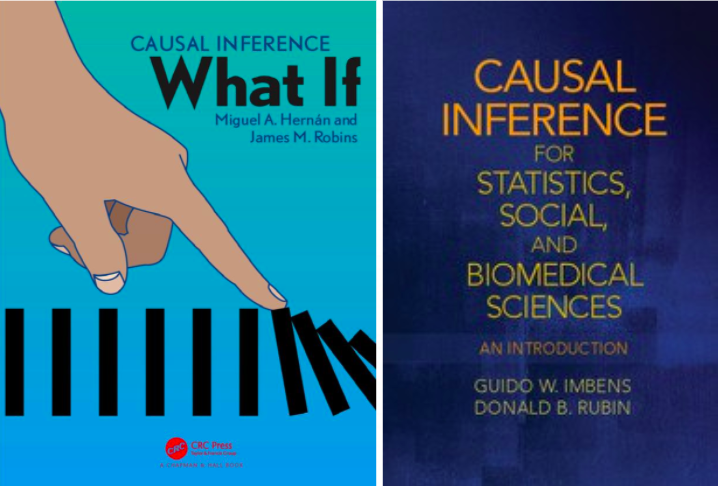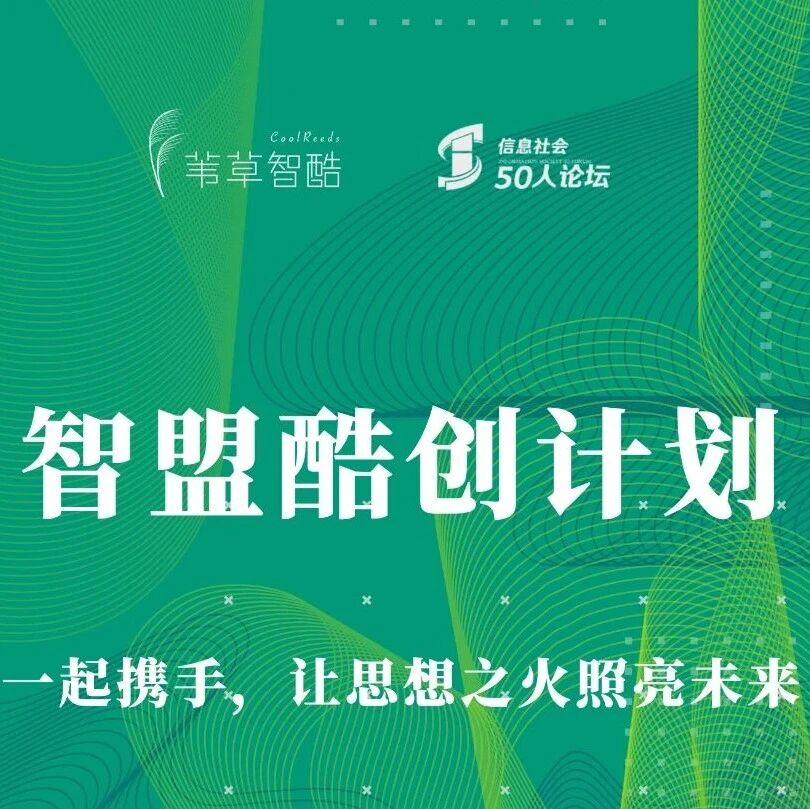因果+X:解决多学科领域的因果问题 | 因果科学读书会第三季启动

导语
“因果”并不是一个新概念,而是一个已经在多个学科中使用了数十年的分析技术。通过前两季的分享,我们主要梳理了因果科学在计算机领域的前沿进展。如要融会贯通,我们需要回顾数十年来在社会学、经济学、医学、生物学等多个领域中,都是使用了什么样的因果模型、以什么样的范式、解决了什么样的问题。我们还要尝试进行对比和创新,看能否以现在的眼光,用其他的模型,为这些研究提供新的解决思路。

读书会背景
读书会背景
在经历了第一季的前沿探索,第二季因果基础知识和实践之后(前两季学习路径参考文章:构建因果引擎,创新科研范式——因果科学的学习路线图),该如何利用因果工具成为了社区成员的最关心的问题。“因果+X”就是要让因果真正地应用于我们的科学研究中,不管你是来自计算机、数理统计领域,还是社会学、经济学、管理学领域,还是医学、生物学领域,我们希望共同探究出因果研究的范式,真正解决因果的多学科应用问题,乃至解决工业界的问题。
由智源社区、集智俱乐部联合举办的因果科学与Causal AI读书会第三季,将主要面向两类人群:如果你从事计算机相关方向研究,希望为不同领域引入新的计算方法,通过大数据、新算法得到新成果,可以通过读书会各个领域的核心因果问题介绍和论文推荐快速入手;如果你从事其他理工科或人文社科领域研究,也可以通过所属领域的因果研究综述介绍和研讨已有工作的示例代码,在自己的研究中快速开始尝试部署结合因果的算法。
读书会安排
读书会安排
第三季因果科学与Causal AI读书会,将主要结合因果推断的潜在结果(Potential Outcomes)框架展开讨论,并尝试在不同领域尝试建立与SCM的对应关系。
分享主要按照「理论学习」+「案例研讨」的模式进行展开:
第一个模块为「理论学习」模块,这部分将参考W. Imbens和B. Rubin的著作Causal Inference for Statistics, Social, and Biomedical Sciences以及A. Hernan和M. Robins的Causal Inference: What if进行分享,将重点介绍潜在结果框架,包括但不限于实验性研究和观察性研究中的重要方法以及更稳健的因果效应估计方法。

第二个模块为「案例研讨」模块,将围绕目前在不同领域学术界和业界面临的重要问题,研讨包括但不限于计量经济学、推荐系统、精准医疗、计算社会科学、推荐系统、智能运维等学科典型的因果相关分析的研究实例。对这些研究进行复现。我们也将尝试提供相关代码示例,对这些研究进行复现,帮助大家在自己的研究中快速开始部署结合因果的算法。
整体内容设计模块如下:
(文末有具体介绍与参考文献)
「基础理论学习」
-
因果推断的潜在结果框架在实验性研究的应用 -
因果推断在观察性研究中的应用:DESIGN -
因果推断在观察性研究中的应用(续):ANALYSIS
-
医学、药学、生物学中的研究案例 -
管理学、经济学、社会学及政治学中的研究案例 -
因果随机森林及其在工业界的应用 -
多级治疗与连续性暴露 -
因果推荐系统 -
因果在自然语言处理中的应用 -
因果与公平性和可解释性
-
双稳健估计、处理极端倾向得分的方法 -
阴性对照试验 -
高维因果推断 -
结合随机化试验数据与观察性数据
参与方式及时间
参与方式及时间
发起人员
参与人员
-
计算机领域的人群,希望为不同领域引入新的计算方法,通过大数据、新算法得到新成果的朋友。 -
社会学、生物学等其他领域人群,希望通过所属领域的因果研究综述介绍和相关理论学习实践,在自己的研究中结合因果算法的朋友。
运行模式
每周由1-2名读书会成员领读相关书籍章节或者介绍因果推断在某一领域中的应用
时间:
从2021年10月24日开始,每周日上午 10:00-12:00举办。共11-12期,每周一期。持续时间预计 2-3 个月。
方式:
此次读书会为线上闭门读书会,采用线上会议的方式进行,结束之后会为报名成员提供视频回放等多种资料供大家学习。
费用:
为了甄选出真正对因果推理感兴趣、有相关研究经验的专业人士,也为激励小伙伴们坚持学习,本期读书会将采取收费 – 退款的保证金模式。费用可开发票。
具体规则:
1. 读书会保证金共计 299 元/人。
2. 满足如下条件之一者全额退款(本季读书会结束后统一退费):
-
贡献了一次讲座(半小时以上)内容的(需要提前向主持人申请并通过试讲);
-
完成了一篇以上读书笔记写作,并在集智俱乐部公众号分享。(读书笔记标准:字数3千以上,图文并茂,具体请参照此文:因果观念新革命?万字长文,解读复杂系统背后的暗因果);
-
认真完成集智百科相应的编撰任务,经过集智百科团队审核通过,并达到299积分。(详情见https://wiki.swarma.org/index.php?title=激励制度)
3. 满足以下条件之一的不仅可以全额退款,还有额外奖励:
-
由读书会内容启发,产生了靠谱的新产品创意,并在读书会结束 2 个月内提交了详细的产品策划方案,并通过了集智俱乐部组织的相应考核答辩的;
-
由读书会内容启发,萌发了科研论文创意,在读书会结束 2 个月内完成初稿,并在最终的论文成果中致谢集智俱乐部和因果社区的(需要发表在SCI等核心刊物上。)
报名:(长期有效)

扫码报名
第一步:扫码填写报名信息。
第二步:信息填写之后,进入付款流程,提交保证金299元。(符合退费条件后可退费。)
第三步:添加负责人微信,拉入对应的读书会讨论群。
读书会阅读材料
读书会阅读材料
理论学习模块
案例研讨模块
医学、药学、生物学中的研究案例
[1] Keisuke, H. , Imbens, G. W. , Rubin, D. B. , & Xiao-Hua, Z. . (2000). Assessing the effect of an influenza vaccine in an encouragement design. Biostatistics.
https://pubmed.ncbi.nlm.nih.gov/12933526/
[2] Wang, L. , Zhou, X. H. , & Richardson, T. S. . (2016). Identification and estimation of causal effects with outcomes truncated by death. Biometrika.
https://academic.oup.com/biomet/article/104/3/597/3957587
[3] Zhao, Y., Zeng, D., Rush, A. J., & Kosorok, M. R. (2012). Estimating individualized treatment rules using outcome weighted learning. Journal of the American Statistical Association.
https://www.ncbi.nlm.nih.gov/pmc/articles/PMC3636816/
[4] Guo, W. , Zhou, X. H., & Ma, S. (2020). Estimation of optimal individualized treatment rules using a covariate-specific treatment effect curve with high-dimensional covariates. Journal of the American Statistical Association.
https://www.tandfonline.com/doi/full/10.1080/01621459.2020.1865167
管理学、经济学、社会学及政治学中的研究案例
https://www.journals.uchicago.edu/doi/abs/10.1086/702172
[2] Yu Xie, Jennie E. Brand, and Ben Jann. Estimating heterogeneous treatment effects with observational data. Sociological Methodology, 42(1),(2012): 314-347.
https://journals.sagepub.com/doi/abs/10.1177/0081175012452652
[3] Jennie E. Brand and Yu Xie. Who benefits most from college? Evidence for negative selection in heterogeneous economic returns to higher education. American Sociological Review, 75(2), (2010): 273-302.
https://journals.sagepub.com/doi/10.1177/0003122410363567
[4] Rajeev H. Dehe jia and Sadek Wahba. Causal effects in nonexperimental studies: reevaluating the evaluation of training programs. Publications of the American Statistical Association, 94(448),(1999):1053-1062.
[5] https://www.tandfonline.com/doi/abs/10.1080/01621459.1999.10473858
Angrist J D, Pischke J S. Mostly harmless econometrics[M]. Princeton university press, 2008.
[6] Huynh V N , Kreinovich V , Sriboonchitta S . Causal Inference in Econometrics[J]. Studies in Computational Intelligence, 2016.
因果随机森林及其在工业界的应用
https://www.pnas.org/content/113/27/7353.short
[2] Wager, Stefan, and Susan Athey. “Estimation and inference of heterogeneous treatment effects using random forests.” Journal of the American Statistical Association 113.523 (2018): 1228-1242.
https://www.tandfonline.com/doi/abs/10.1080/01621459.2017.1319839
[3] (Optional) Hahn, P. Richard, Jared S. Murray, and Carlos M. Carvalho. “Bayesian regression tree models for causal inference: Regularization, confounding, and heterogeneous effects (with discussion).” Bayesian Analysis 15.3 (2020): 965-1056.
https://projecteuclid.org/journals/bayesian-analysis/volume-15/issue-3/Bayesian-Regression-Tree-Models-for-Causal-Inference–Regularization-Confounding/10.1214/19-BA1195.full
多级治疗与连续性暴露
https://onlinelibrary.wiley.com/doi/abs/10.1111/biom.12505
[2] Wu, Xiao, et al. “Matching on generalized propensity scores with continuous exposures.” arXiv preprint arXiv:1812.06575 (2018).
https://arxiv.org/abs/1812.06575
因果推荐系统
[1] Bonner S, Vasile F. Causal embeddings for recommendation[C]//Proceedings of the 12th ACM conference on recommender systems. 2018: 104-112.
https://dl.acm.org/doi/abs/10.1145/3240323.3240360
[2] Sato M, Takemori S, Singh J, et al. Unbiased learning for the causal effect of recommendation[C]//Fourteenth ACM Conference on Recommender Systems. 2020: 378-387.
https://dl.acm.org/doi/10.1145/3383313.3412261
[3] Mehrotra R, Bhattacharya P, Lalmas M. Inferring the Causal Impact of New Track Releases on Music Recommendation Platforms through Counterfactual Predictions[C]//Fourteenth ACM Conference on Recommender Systems. 2020: 687-691.
https://dl.acm.org/doi/abs/10.1145/3383313.3418491
[4] Wang Y, Liang D, Charlin L, et al. Causal inference for recommender systems[C]//Fourteenth ACM Conference on Recommender Systems. 2020: 426-431.
https://dl.acm.org/doi/abs/10.1145/3383313.3412225
因果在自然语言处理中的应用
https://arxiv.org/abs/2109.00725
[2] Egami, Naoki, et al. “How to make causal inferences using texts.” arXiv preprint arXiv:1802.02163 (2018).
https://arxiv.org/abs/1802.02163
[3] Keith, Katherine A., David Jensen, and Brendan O’Connor. “Text and causal inference: A review of using text to remove confounding from causal estimates.” arXiv preprint arXiv:2005.00649 (2020).
https://arxiv.org/abs/2005.00649
因果与公平性和可解释性
【简介】
在机器学习模型被广泛应用于各行各业的今天,对于一些高风险的决策问题,例如AI在判断一个人的信用卡/借贷申请是否应该通过时,或是HR判断一个人的简历是否合格时,人们开始关注机器学习模型的可解释性和公平性问题。可解释性的目的是回答“模型做出预测时利用了哪些信息?哪些信息在预测中更重要?”这样的问题。而公平性则关注机器学习模型做出的预测是否对不同的人群(如性别,年龄,种族)或者个体公平。本期读书会将结合一些近期发表在一流会议和期刊上的论文,介绍几种借助因果推断来提高机器学习可解释性和公平性的方法。
【参考文献】
[1] Vig, Jesse, et al. “Investigating Gender Bias in Language Models Using Causal Mediation Analysis.” NeurIPS. 2020.
[2] Kusner, Matt, et al. “Counterfactual fairness.” Proceedings of the 31st International Conference on Neural Information Processing Systems. 2017.
https://arxiv.org/abs/1703.06856
[3] Kilbertus, Niki, et al. “The sensitivity of counterfactual fairness to unmeasured confounding.” Uncertainty in Artificial Intelligence. PMLR, 2020.
http://proceedings.mlr.press/v115/kilbertus20a.html
[4] Chiappa, Silvia. “Path-specific counterfactual fairness.” Proceedings of the AAAI Conference on Artificial Intelligence. Vol. 33. No. 01. 2019.
https://ojs.aaai.org//index.php/AAAI/article/view/4777
[5] Feder, Amir, et al. “Causalm: Causal model explanation through counterfactual language models.” Computational Linguistics 47.2 (2021): 333-386.
https://arxiv.org/abs/2005.13407
因果科学社区的简介
因果科学社区的简介
点击“阅读原文”,报名读书会










